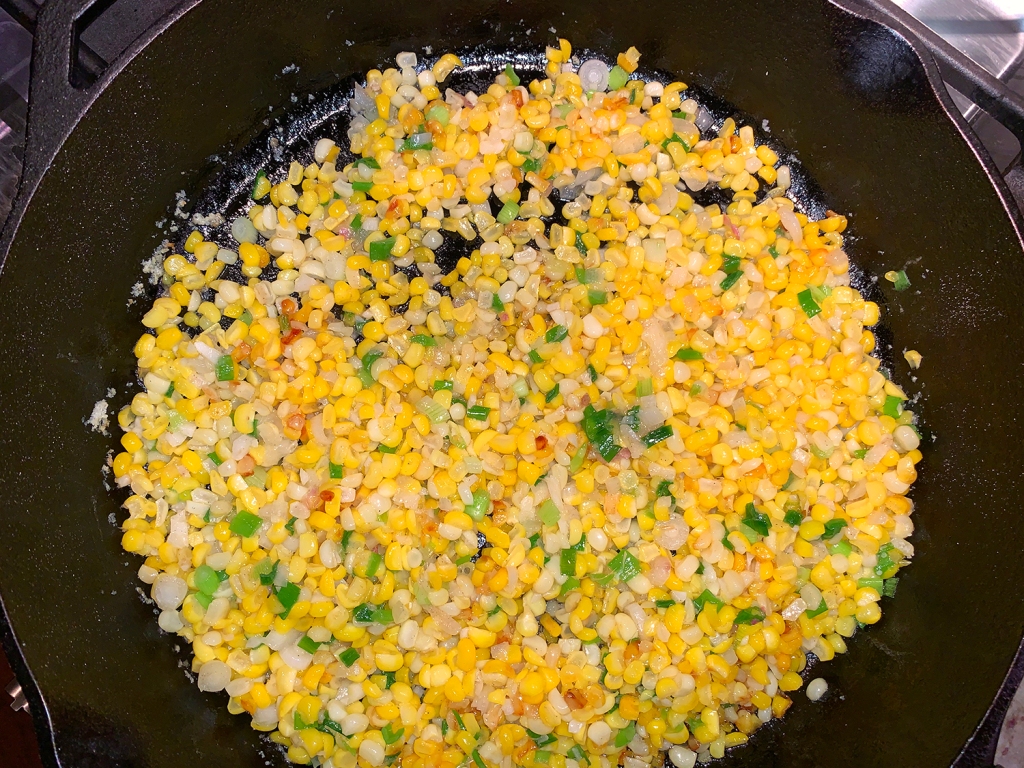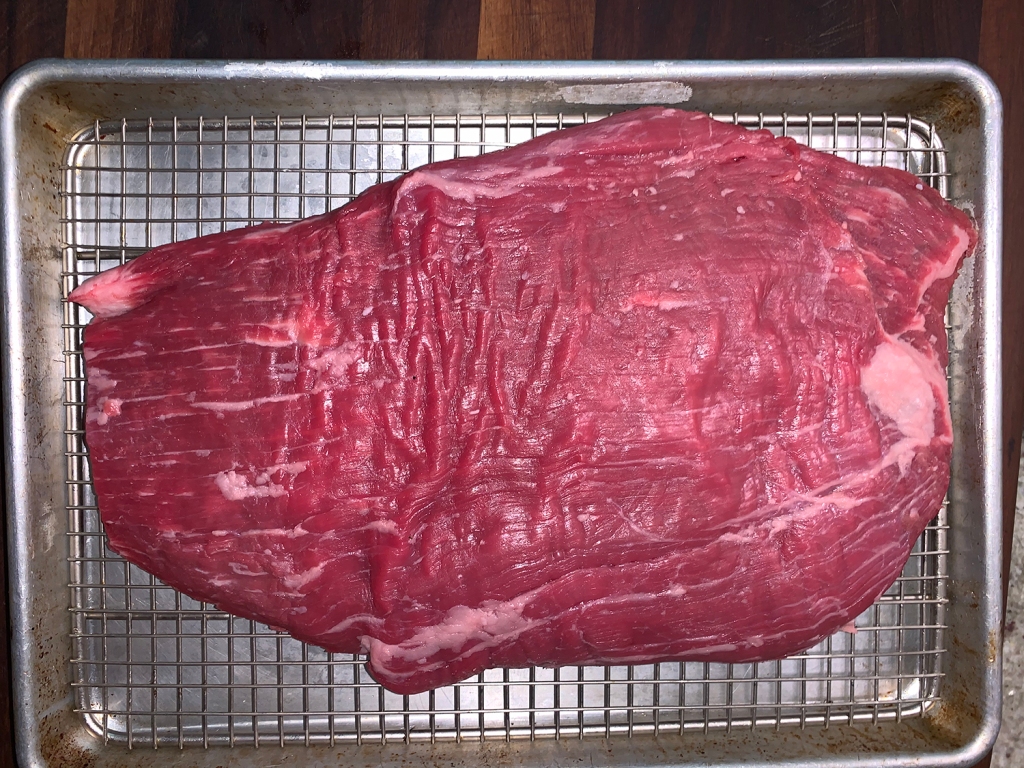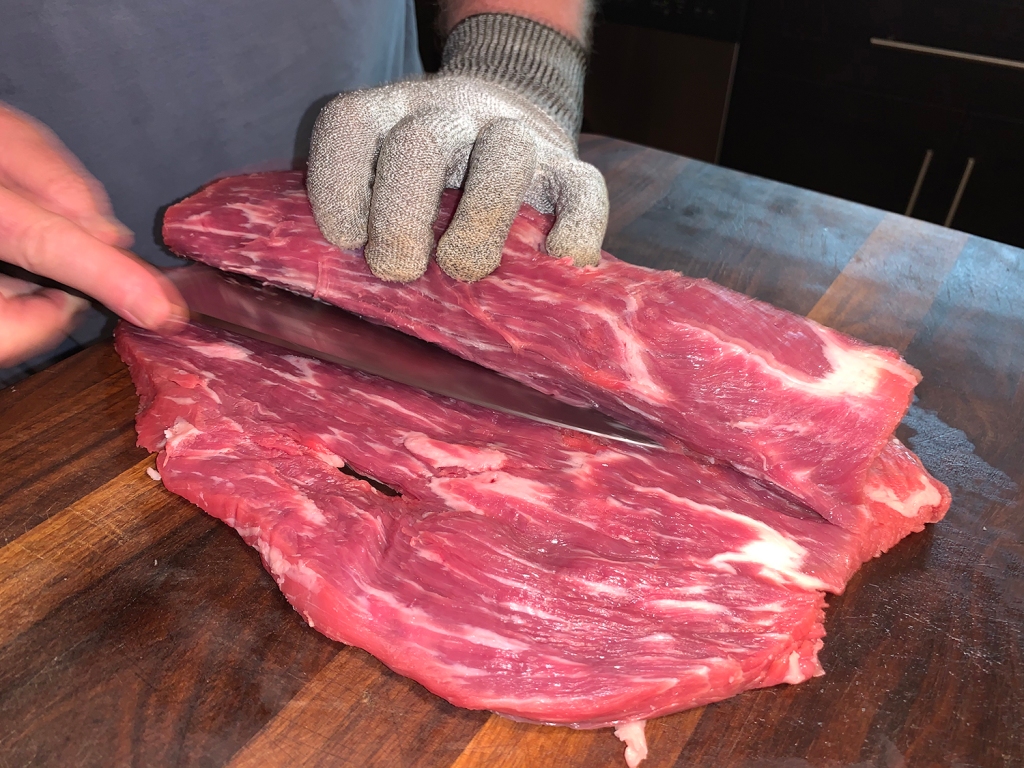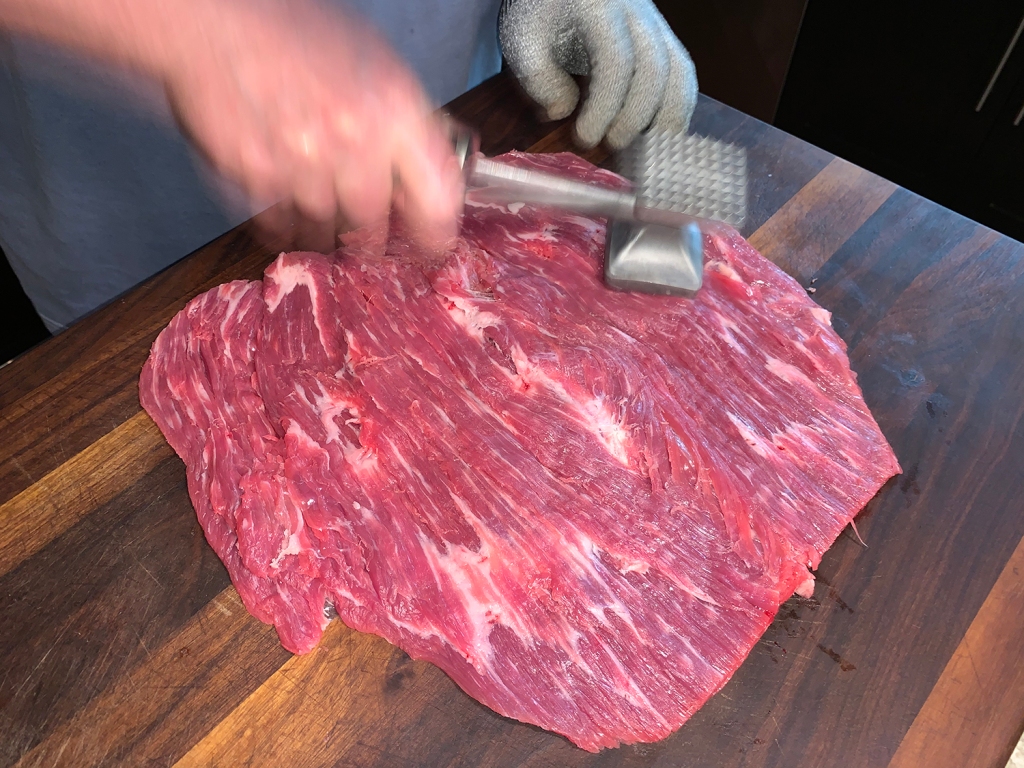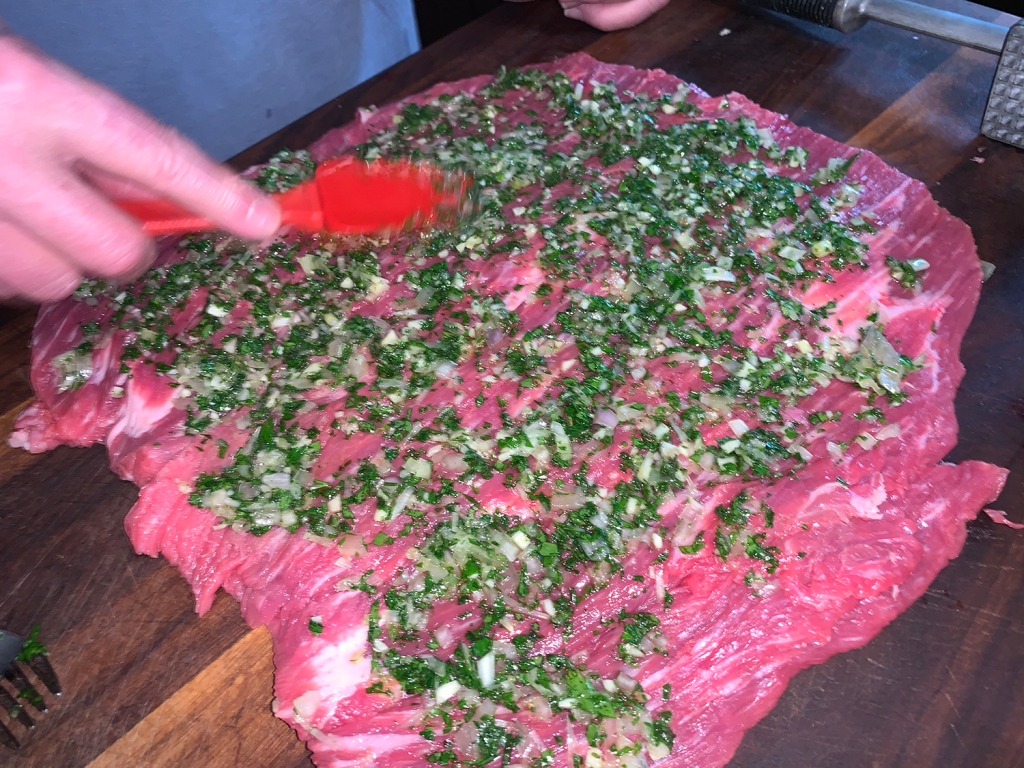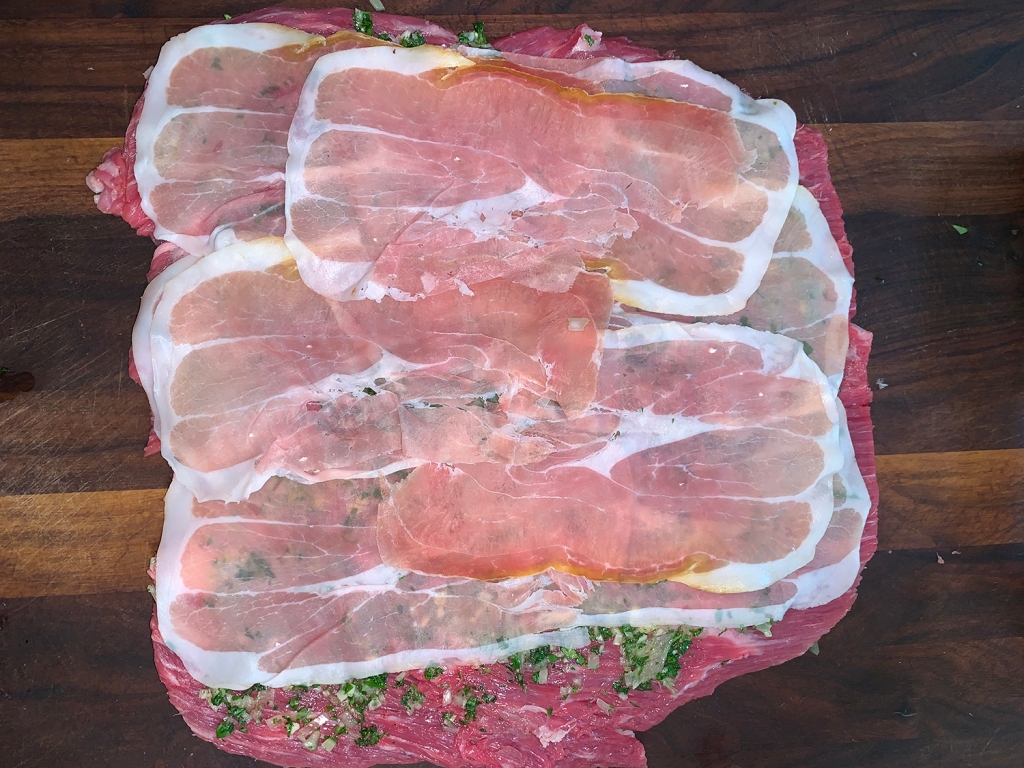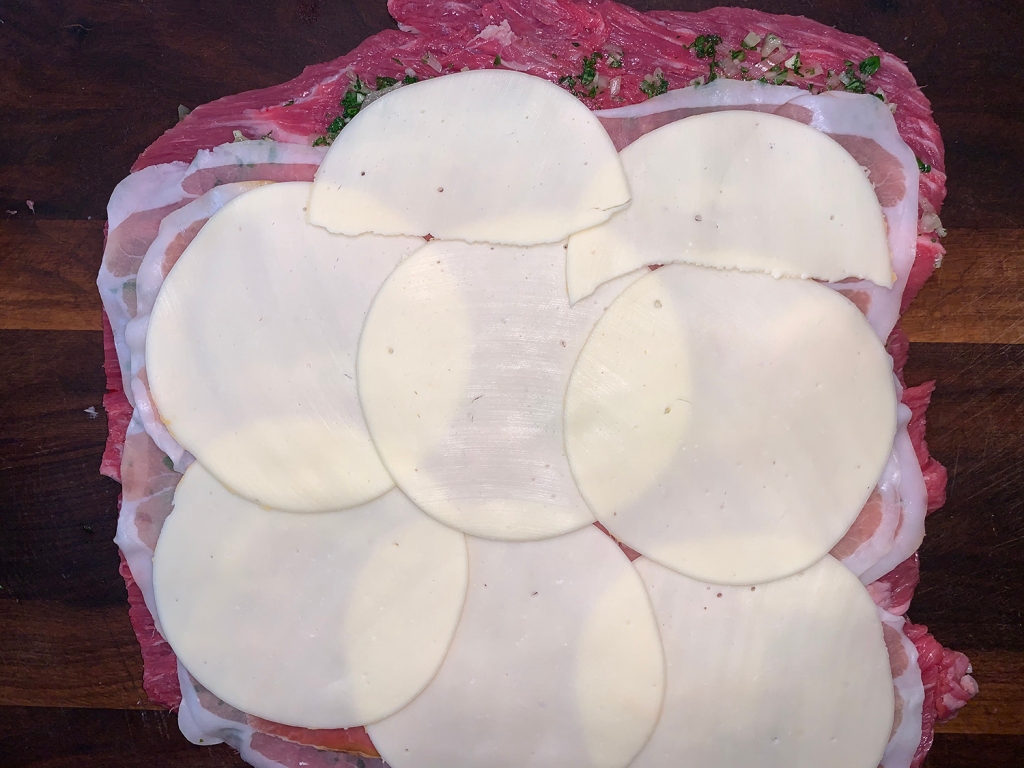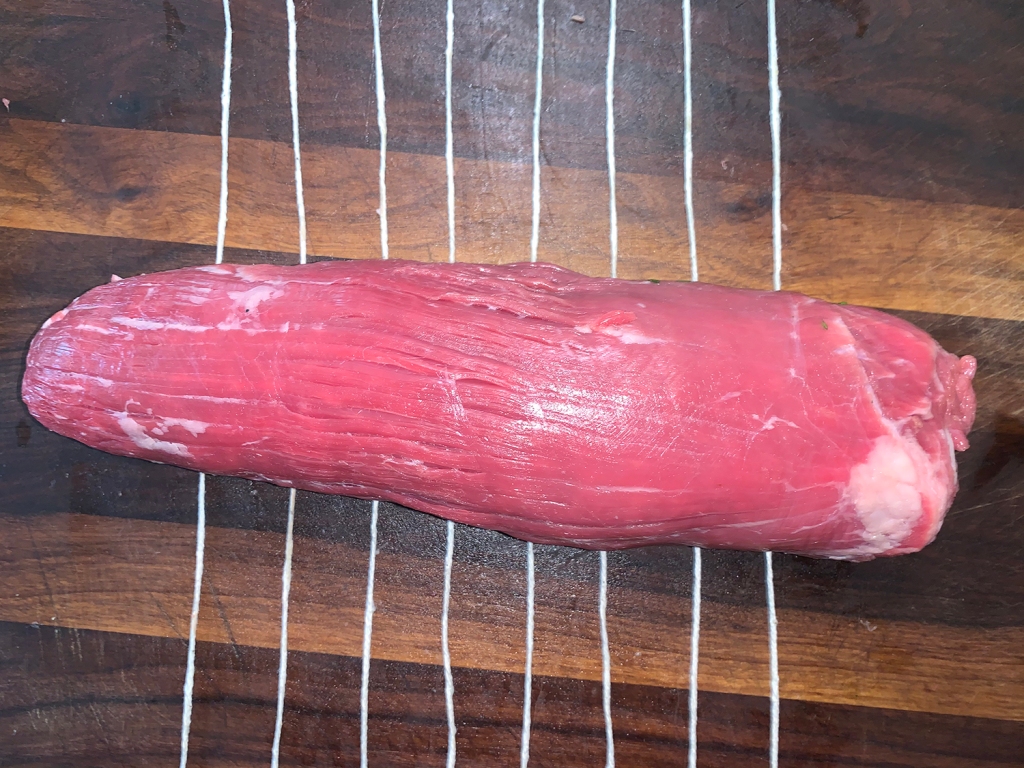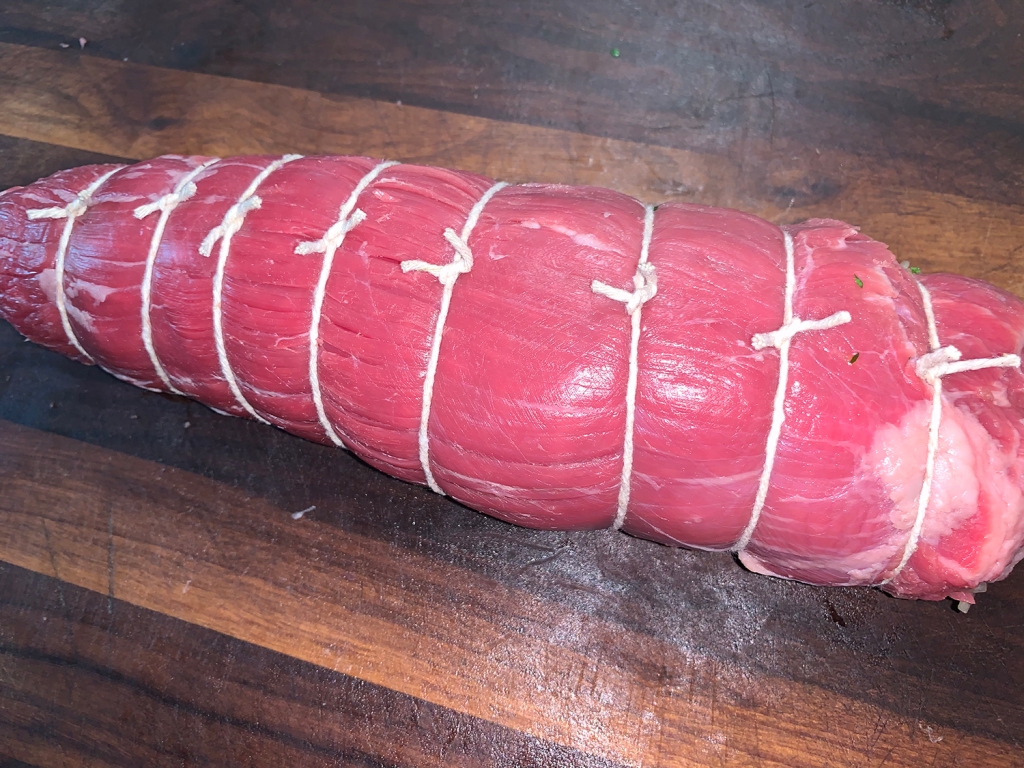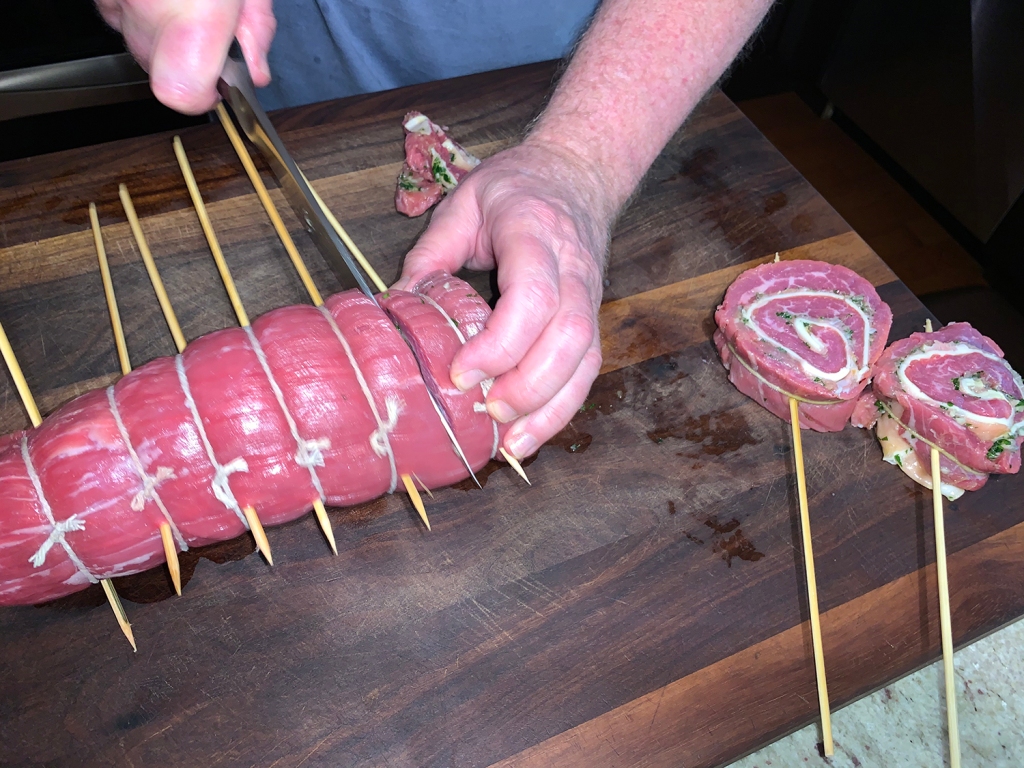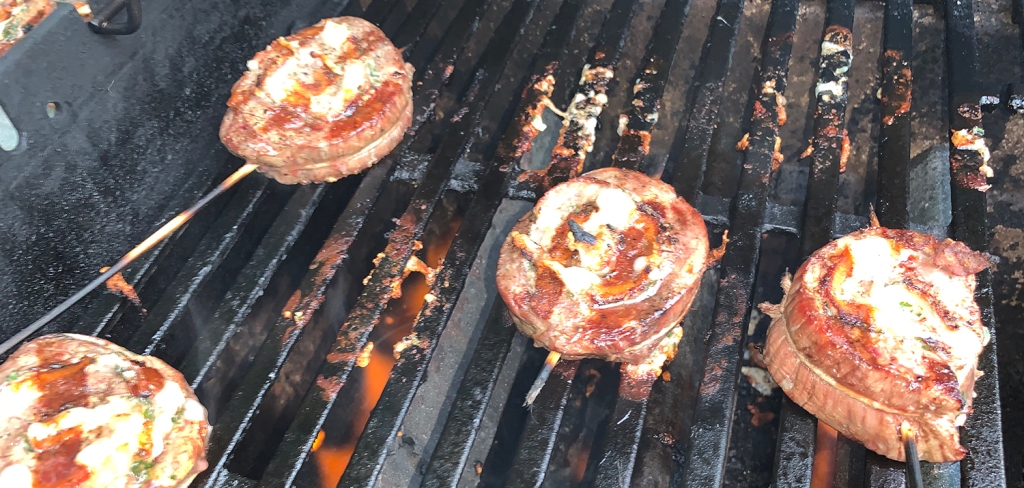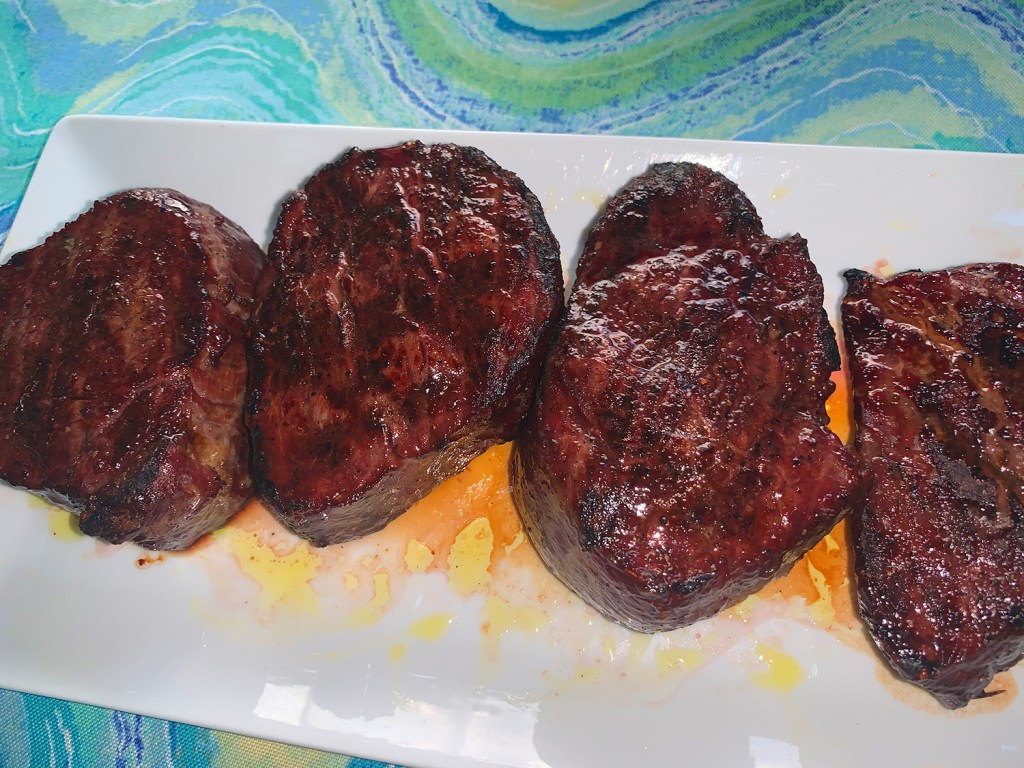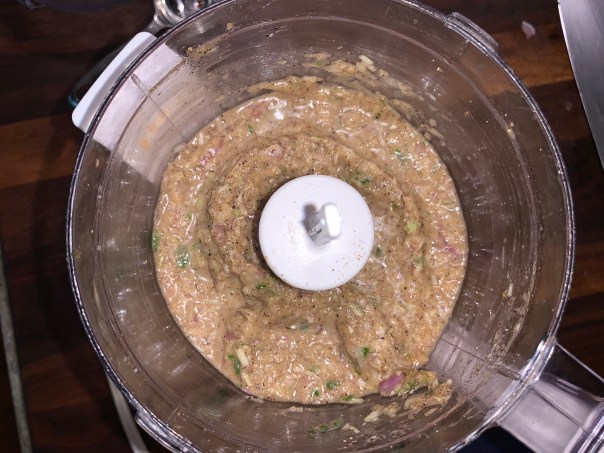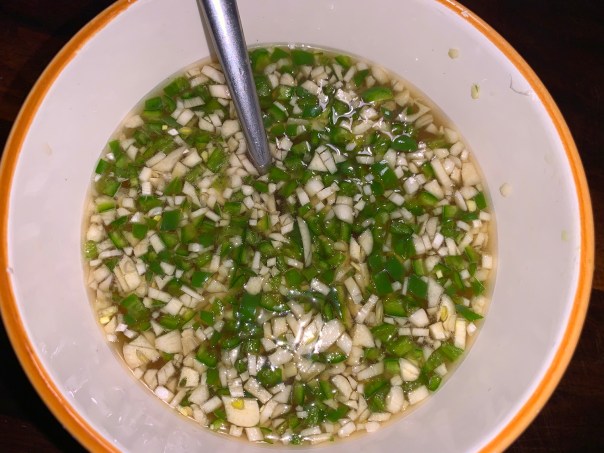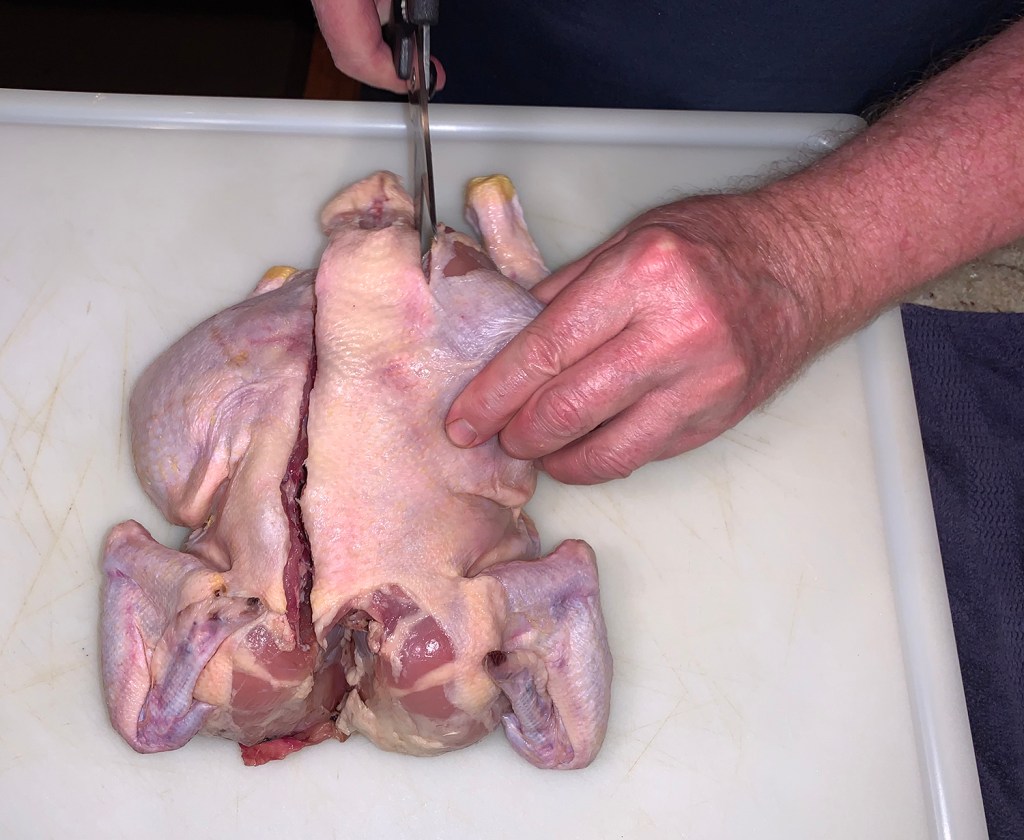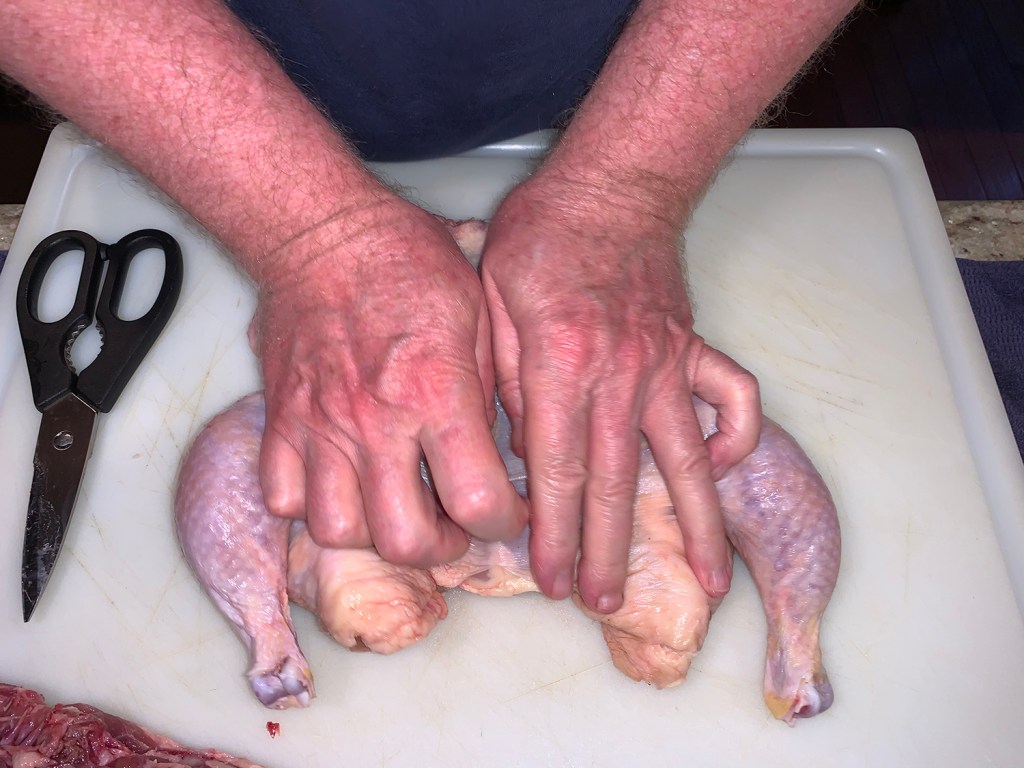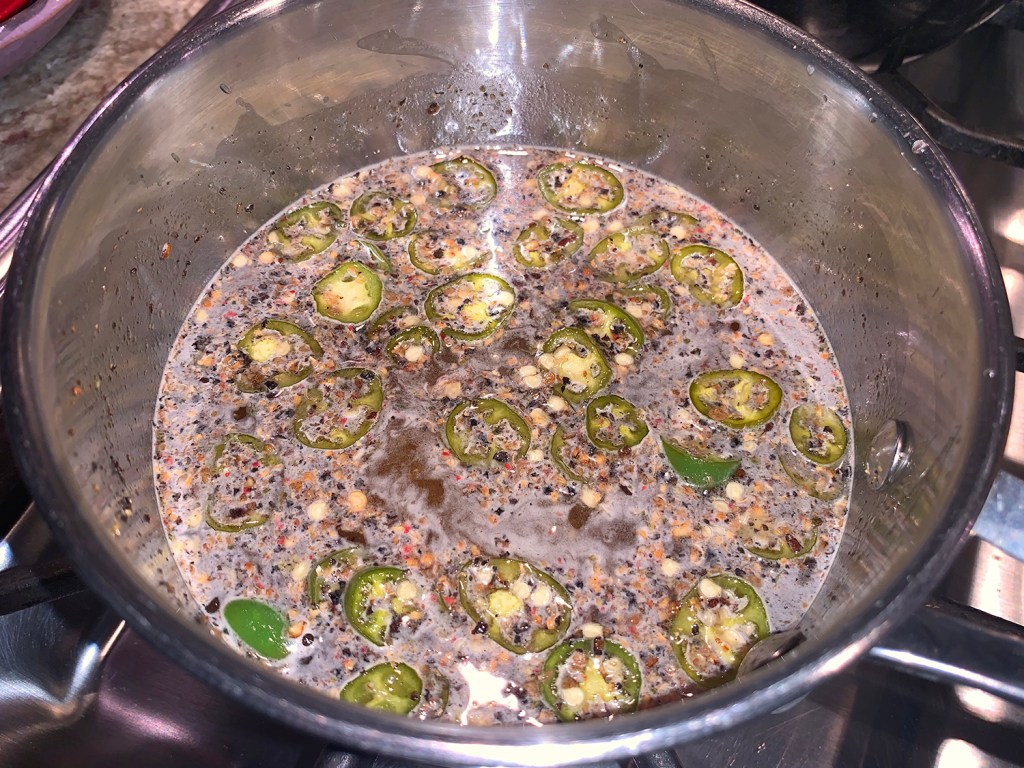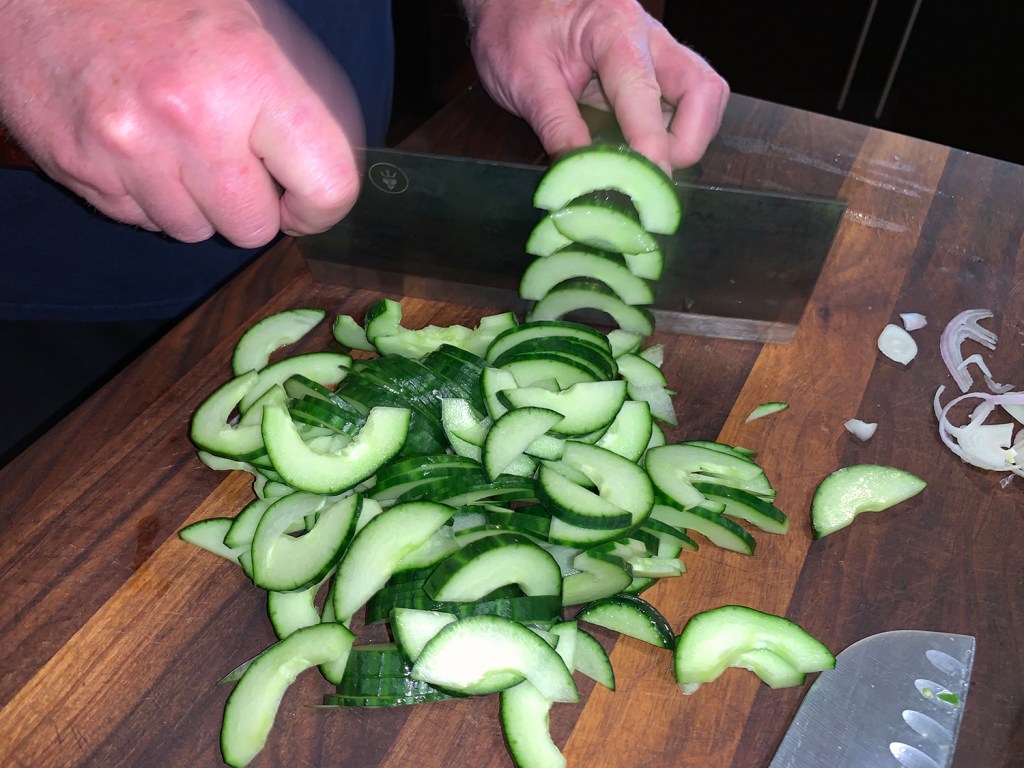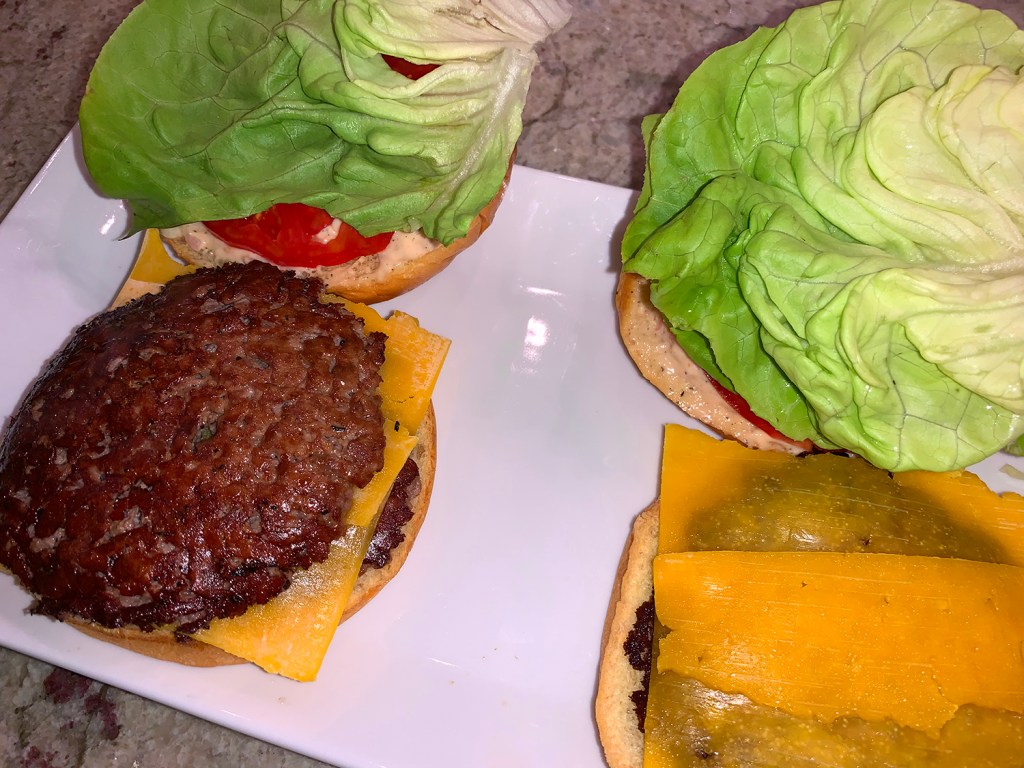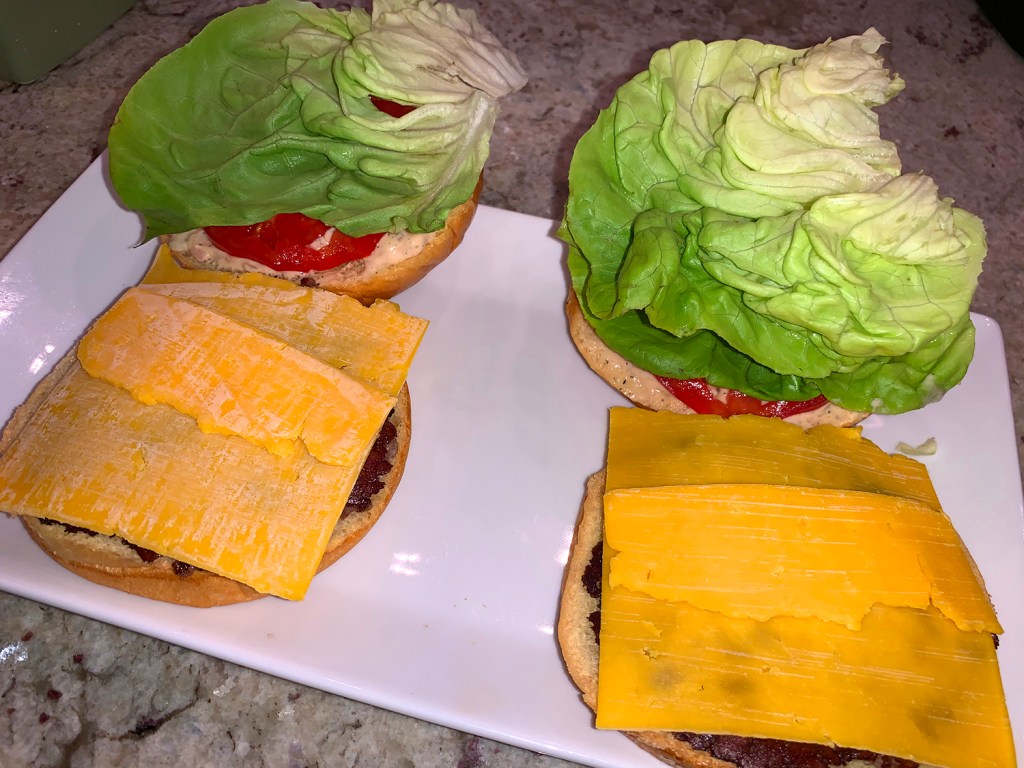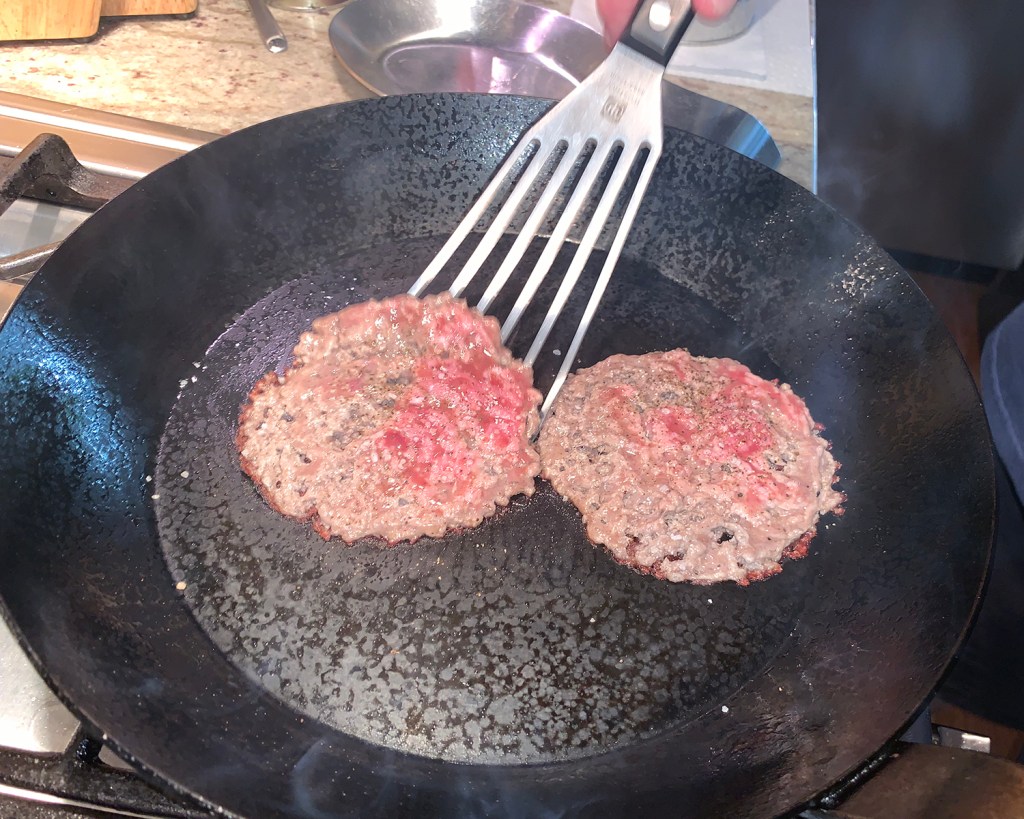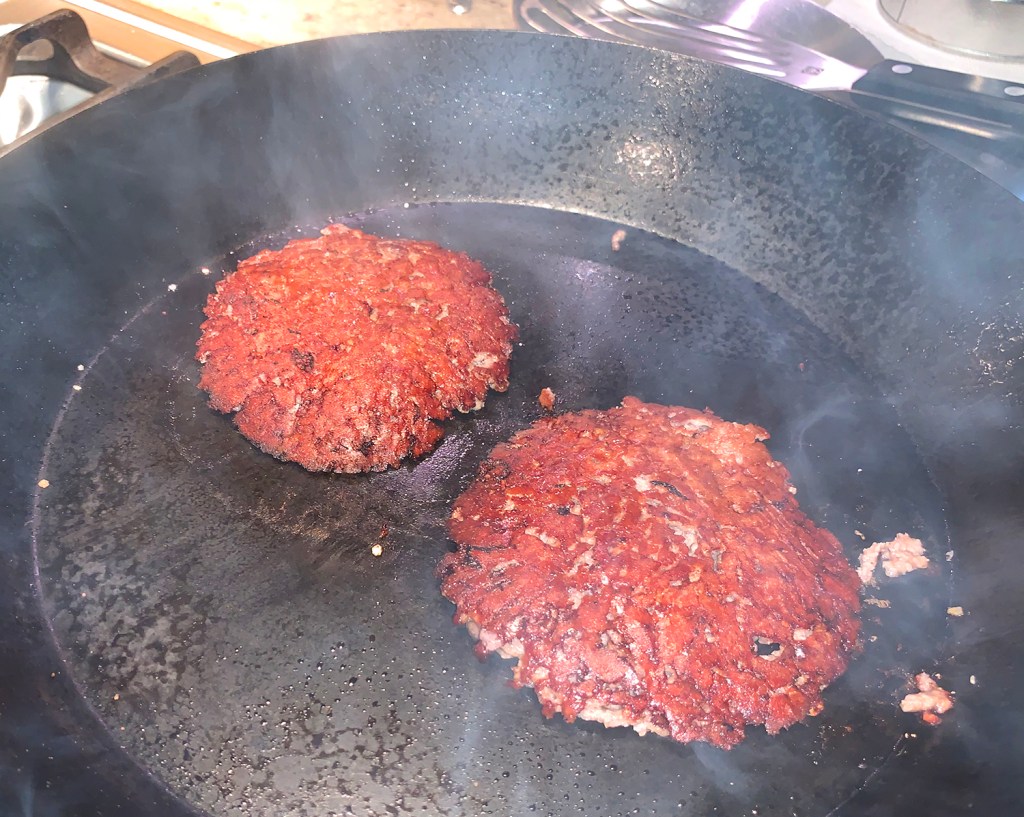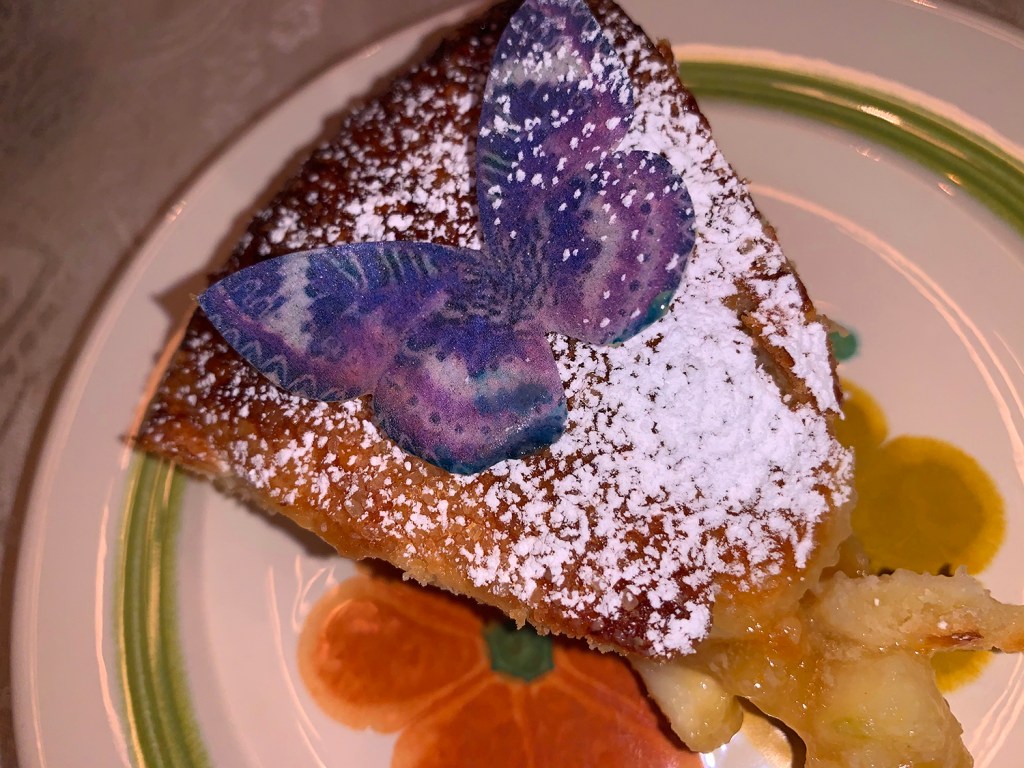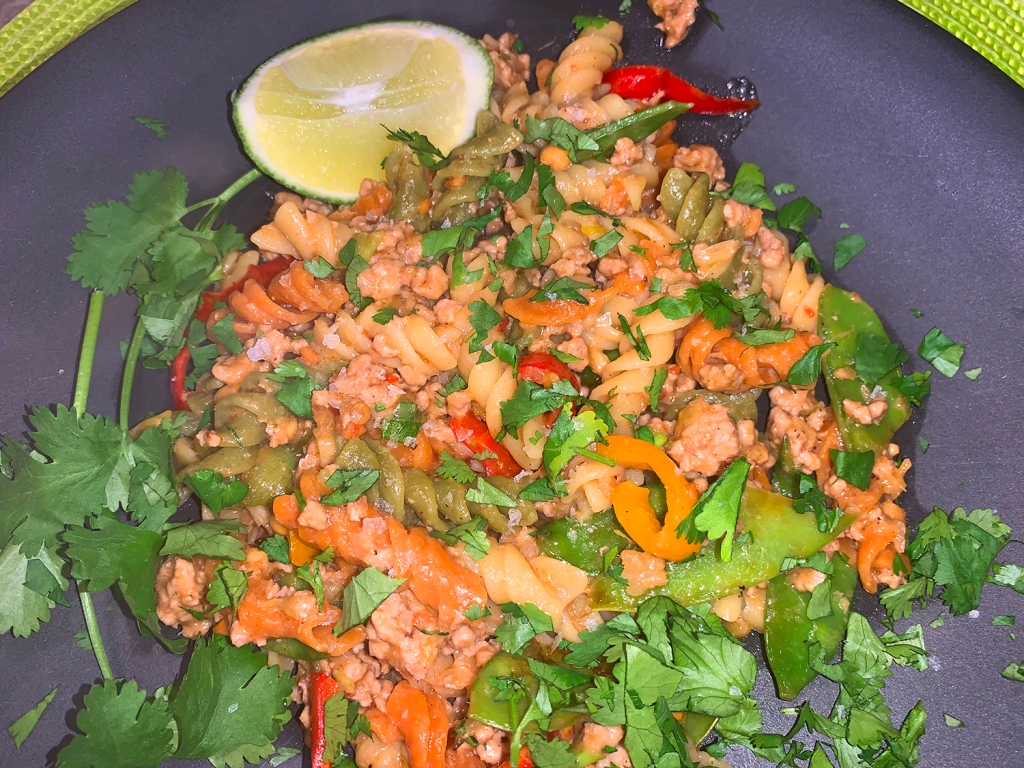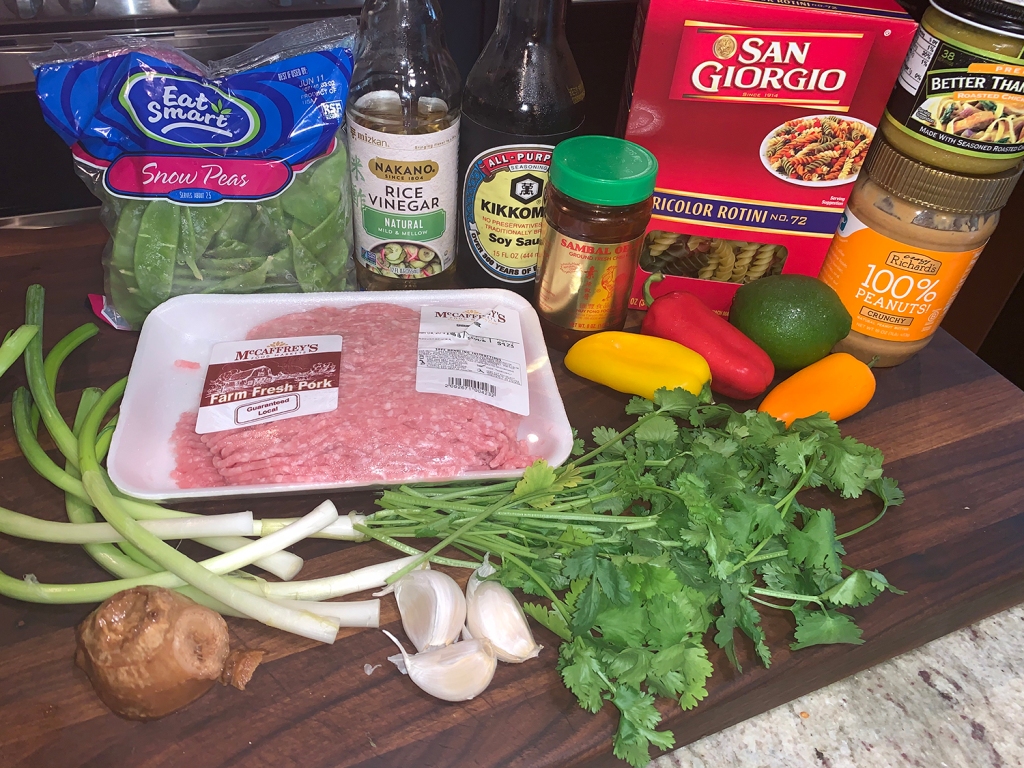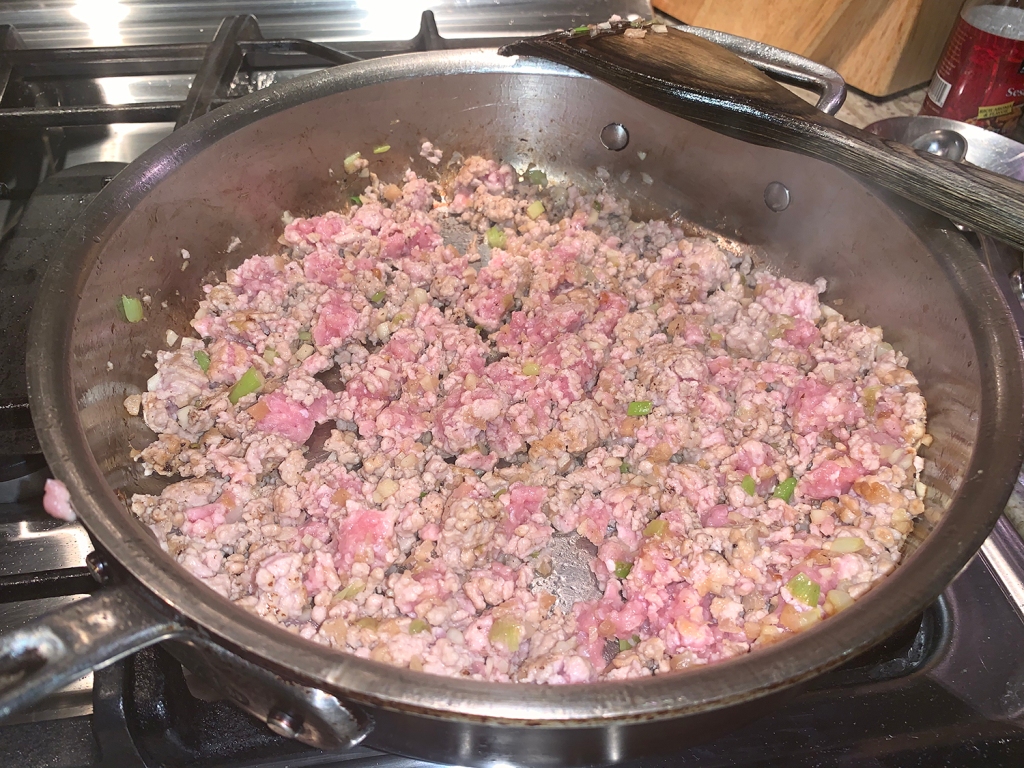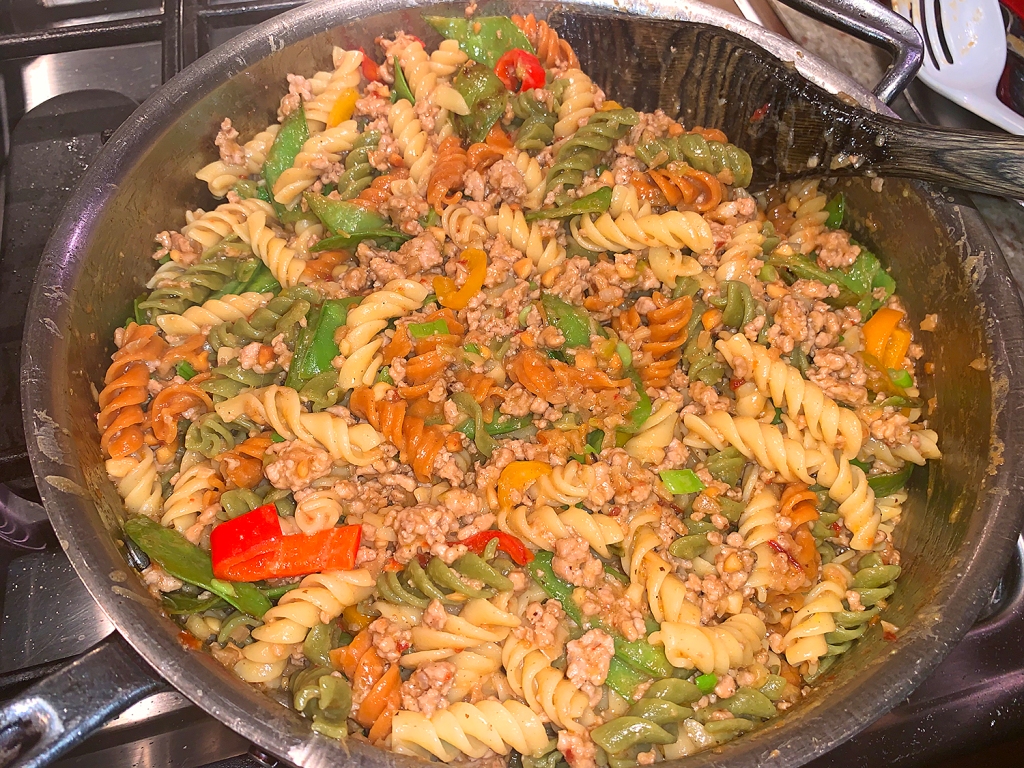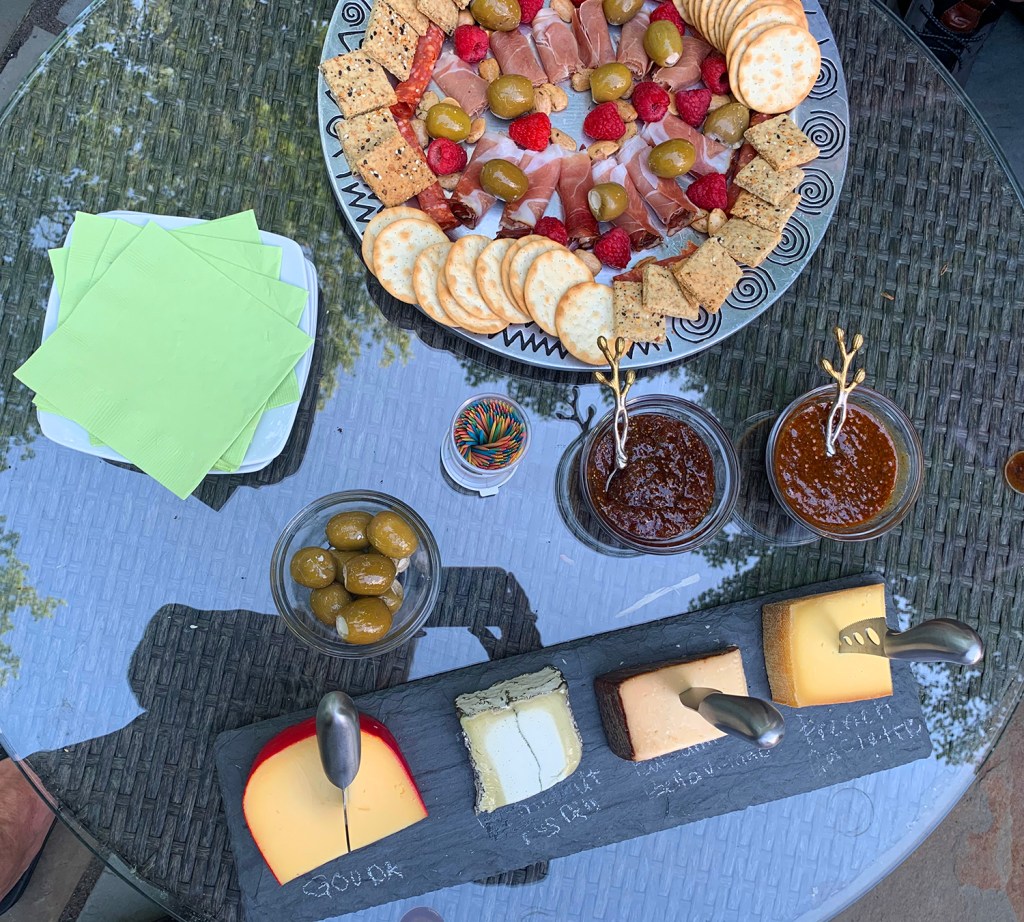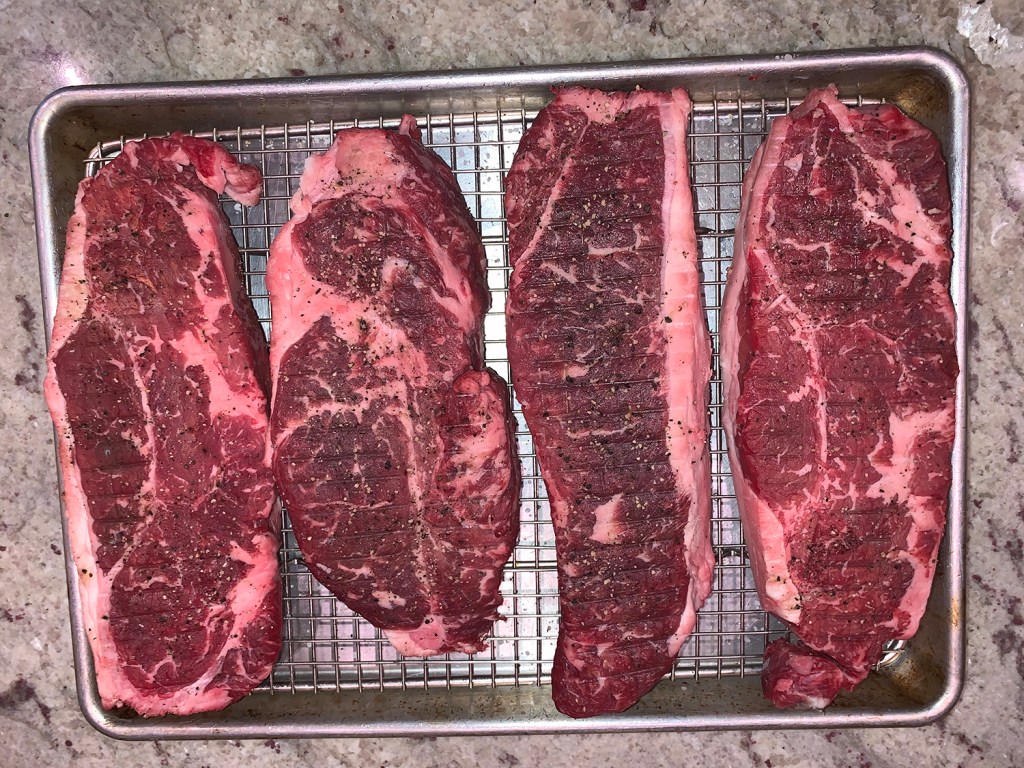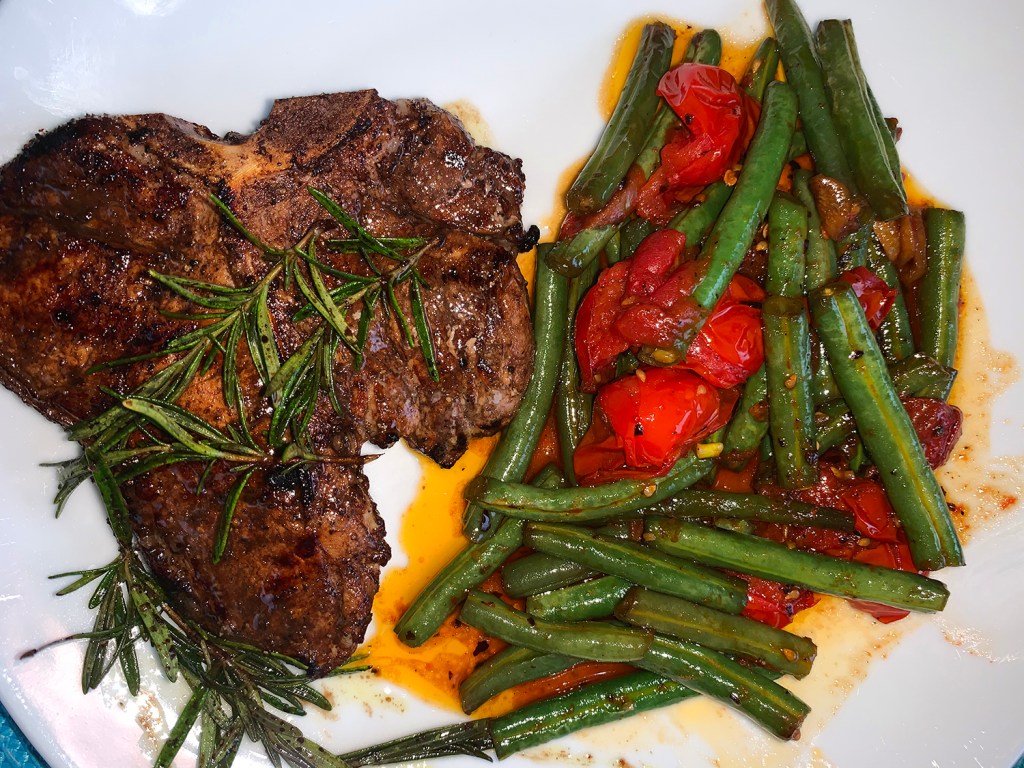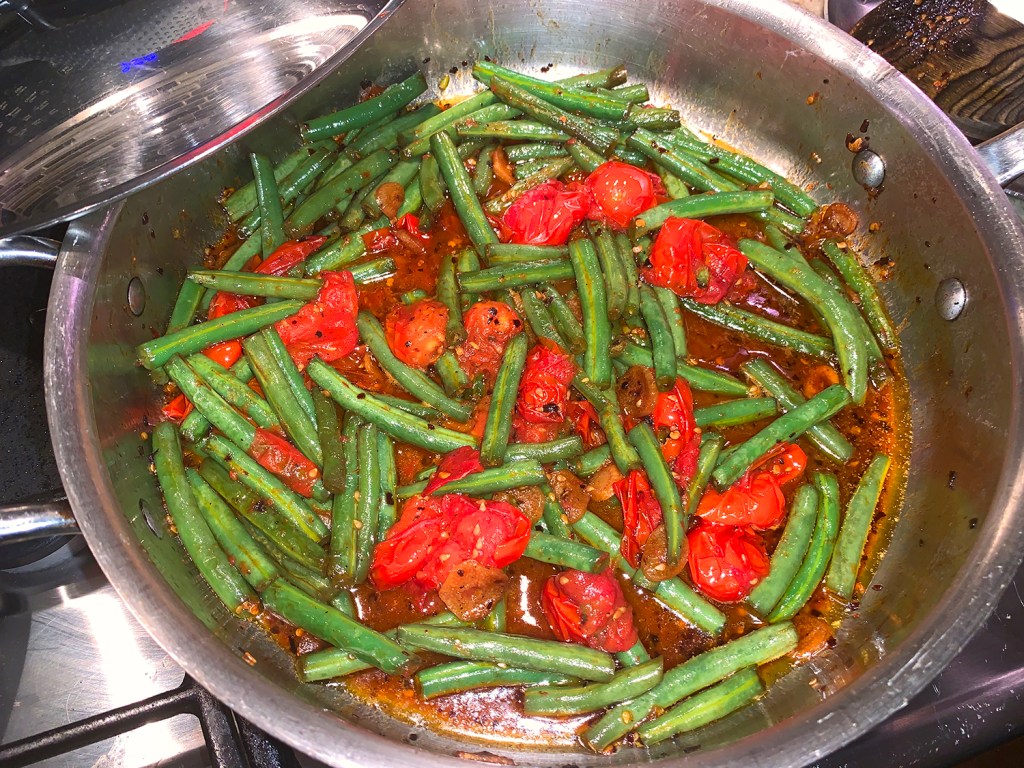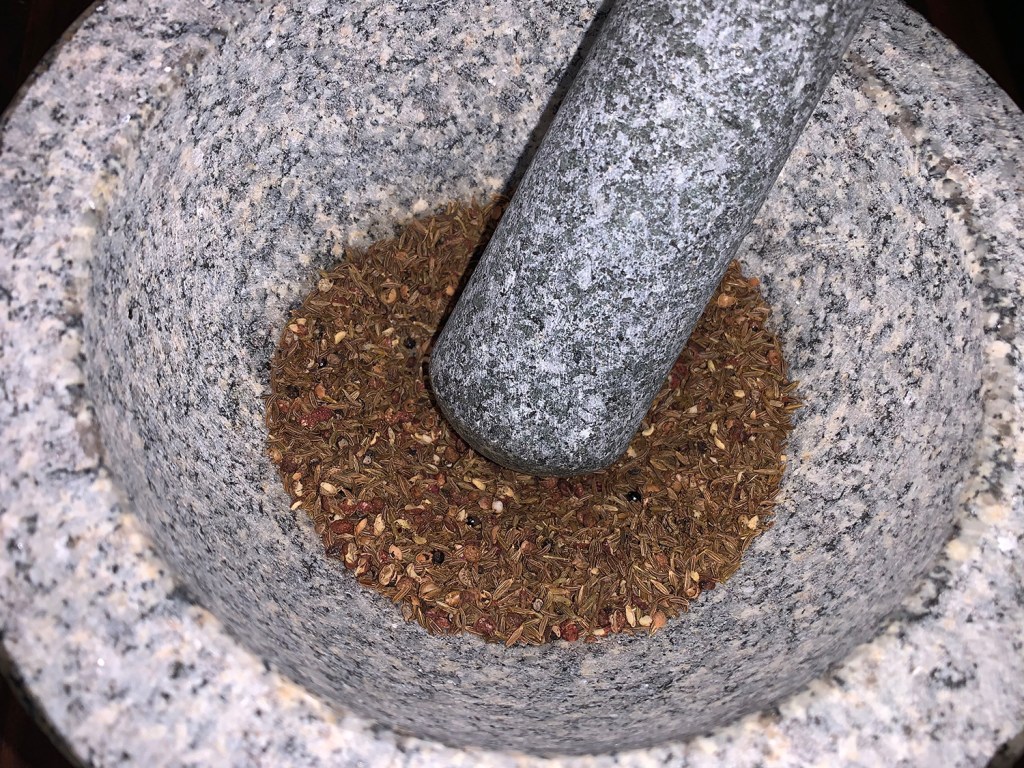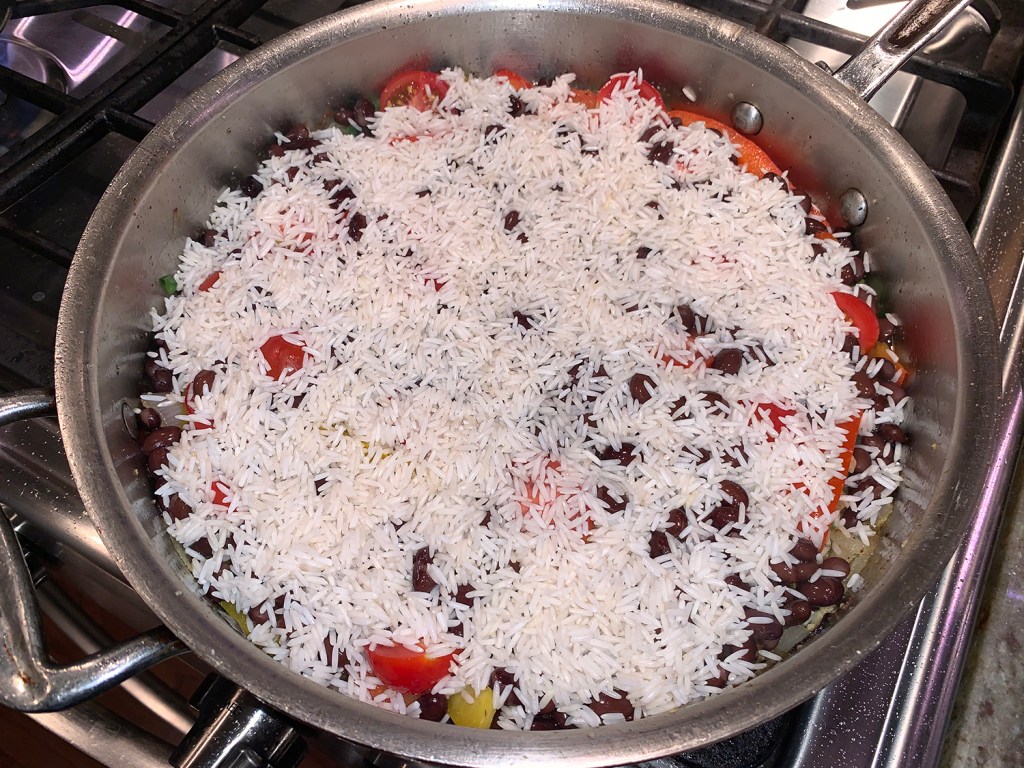One of, if not THE, most popular posts on this blog over the course of its 6 1/2 year history is this Flank Steak Pinwheel Lollipops recipe. In the past month alone it garnered over 17,000 impressions on my Pinterest Board Casa “H” Culinary Creations! Even though they may look complicated in structure, they’re not, and folks love them, as did our recent dinner guests Pat and Charlie.
To start the evening, Pat and Charlie (shown below), brought a lovely shrimp appetizer with two dips. One was a spicy homemade cocktail sauce; and the other an unusual combination that Charlie said at first tasted like spackle. Not so in the end. Apparently they were trying to find an avocado dip but after visiting numerous stores, only found a quasi avocado/spinach combo. Thanks to some clever additions, their concoction ended up being quite tasty indeed.

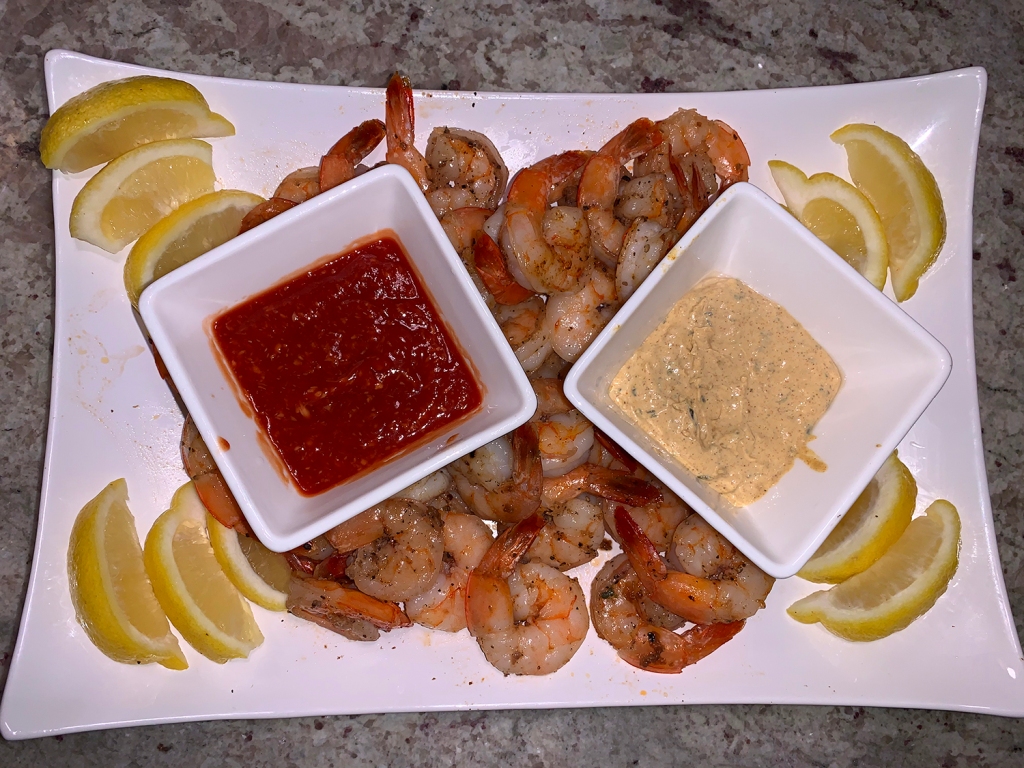
Can’t have a summer BBQ without a couple of good side dishes, and what screams summer more than fresh corn and tomatoes? I’ve included the Summer Sweet Corn Sauté recipe below. It couldn’t be more simple, is super quick, and oh so tasty. And if you’ve never had a Caprese Salad with heirloom tomatoes, I urge you to whip one together real soon.
Back to that main entrée. It is difficult to find a large enough, 2 to 2 1/2 pound, flank steak. Do yourself a favor and call the butcher several days ahead of time and reserve one. Even doing so, the largest I could get was just over 2 pounds, but it sufficed to feed four people with one lollipop left over.
To get the filling to stay put in the stuffed flank steak, first freeze the meat for about 30-45 minutes, butterfly the steak, then split it horizontally and open it like a book. Use a food mallet to pound it down to an even thickness, being careful not to tear holes in it. Once stuffed and rolled, the meat holds up well on the grill when you use both skewers and twine to secure the layers.
Don’t break a sweat if some of the wooden skewers catch fire while grilling, ours did and we had soaked them all day! Just blow out the flames as needed. You’ll be removing them and the twine before you serve your guests anyway.
Grilled and Stuffed Flank Steak Pinwheel Lollipops
Ingredients
- 2 medium garlic cloves, minced or pressed through garlic press (about 2 teaspoons)
- 1 small shallot, minced (about 2 tablespoons)
- 2 Tbsp. fresh parsley leaves, finely minced
- 1 tsp. sage leaves, finely minced
- 2 Tbsp. olive oil, plus extra for oiling grate
- 1 flank steak (2- to 2 ½-pounds)
- 4 oz. thinly sliced prosciutto
- 4 oz. thinly sliced provolone
- 8 – 12 skewers soaked in water for at least 30 minutes
- Kosher salt and ground black pepper

Directions
- Combine garlic, shallot, parsley, sage, and olive oil in small bowl. Butterfly and pound flank steak into rough rectangle.
- With steak positioned so that grain runs parallel to edge of counter and opened side faces up, spread herb mixture evenly over surface of steak. Lay prosciutto evenly over steak, leaving 2-inch border along top edge. Cover prosciutto with even layer of cheese, leaving 2-inch border along top edge.
- Starting from bottom edge and rolling away from you, roll beef into tight log and place on cutting board seam-side down.
- Starting ½ inch from end of rolled steak, evenly space 8 to twelve 14-inch pieces of butcher’s twine at 1-inch intervals underneath steak. Tie middle string first; then working from outermost strings toward center, tightly tie roll and turn tied steak 90 degrees so seam is facing you.
- Skewer beef directly through outermost flap of steak near seam through each piece of string, allowing skewer to extend ½ inch on opposite side. Using chef’s knife, slice roll between pieces of twine into 1 1/4 inch thick pinwheels. Season pinwheels lightly with kosher salt and black pepper.
- Turn all burners to high and heat with lid down until very hot, about 15 minutes. Scrape grate clean with grill brush. Dip wad of paper towels in oil; holding wad with tongs, wipe cooking grate. Leave primary burner on high and turn off other burner(s).
- Grill pinwheels directly over hot side of grill until well browned, 3 to 6 minutes. Using tongs, flip pinwheels; grill until second side is well browned, 3 to 5 minutes longer.
- Transfer pinwheels to cooler side of grill, cover, and continue to cook until center of pinwheels registers 125 degrees on instant-read thermometer, 1 to 4 minutes (slightly thinner pinwheels may not need time on cooler side of grill).
- Transfer pinwheels to large plate, tent loosely with foil, and let rest 5 minutes. Remove and discard skewers and twine and serve immediately.
Adapted from Cook’s Illustrated
Sweet Summer Corn Sauté
Summer Sweet Corn Sauté
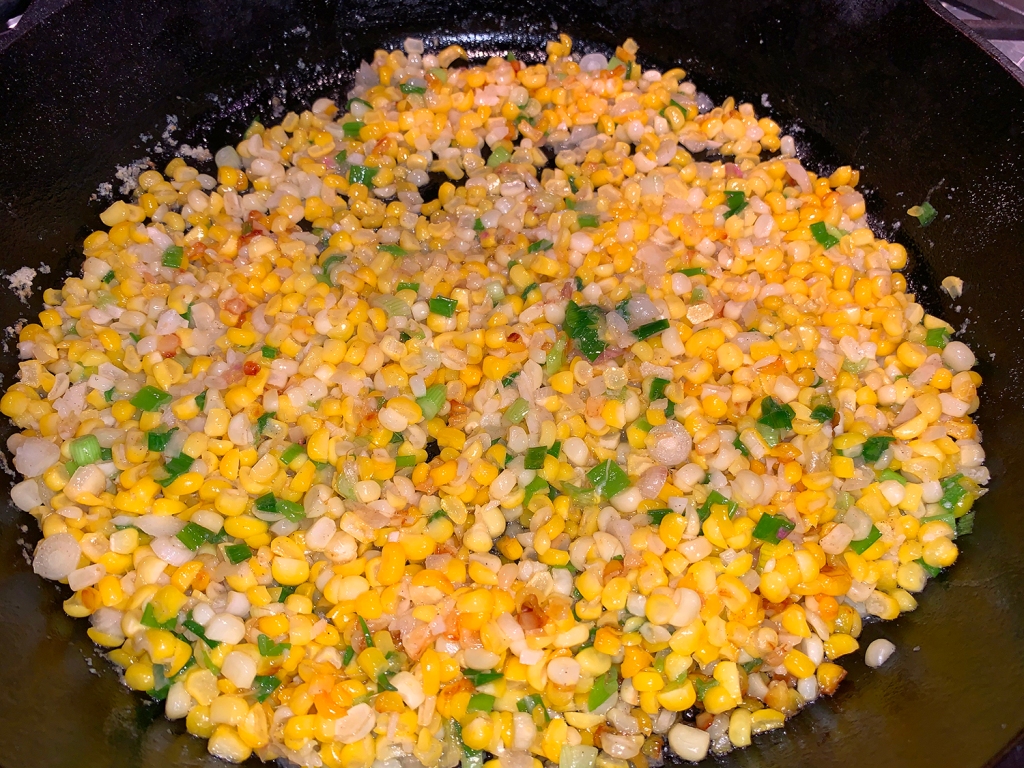
Ingredients
- 4 Tbsp. unsalted butter
- 6 ears sweet corn, kernels cut off from cob
- 4 scallions, thinly sliced
- 1 small shallot, minced
- 3 cloves garlic, minced
- Kosher slat and freshly ground pepper
- 8-10 large basil leaves, rolled and thinly sliced
Directions
- Melt the butter in a large cast iron skillet over medium heat.
- Once melted, add the corn kernels and cook undisturbed for 8-10 minutes (or longer if needed). The corn should be lightly browned and caramelized on one side.
- Add the scallions, shallot and garlic and continue cooking for another 4 minutes.
- Turn off the heat. Stir in the basil chiffonade and transfer to a serving bowl and serve.

